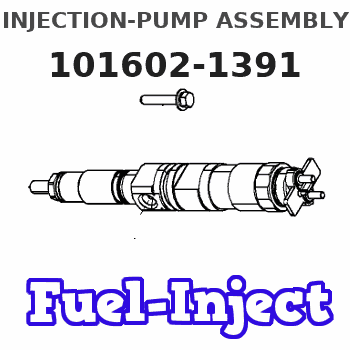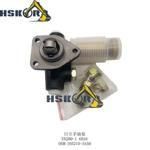Information injection-pump assembly
ZEXEL
101602-1391
1016021391

Rating:
Service parts 101602-1391 INJECTION-PUMP ASSEMBLY:
1.
_
5.
AUTOM. ADVANCE MECHANIS
6.
COUPLING PLATE
8.
_
9.
_
11.
Nozzle and Holder
ME078067
12.
Open Pre:MPa(Kqf/cm2)
17.7{180}
15.
NOZZLE SET
Include in #1:
101602-1391
as INJECTION-PUMP ASSEMBLY
Include in #2:
104131-3070
as _
Cross reference number
Zexel num
Bosch num
Firm num
Name
101602-1391
INJECTION-PUMP ASSEMBLY
Information:
Table 2
Ethylene Glycol Concentration
Concentration Freeze Protection Boil Protection(1)
20 Percent −8° C (18° F) 102° C (216° F)
50 Percent −37 °C (−34 °F) 106 °C (223 °F)
60 Percent −52 °C (−62 °F) 111 °C (232 °F)
(1) Boiling protection is increased with the use of a pressurized radiator.Do not use propylene glycol in concentrations that exceed 50 percent glycol because of the reduced heat transfer capability. Use ethylene glycol in conditions that require additional protection against boiling or freezing. Do not use ethylene glycol in concentrations that exceed 60 percent glycol.
Table 3
Propylene Glycol Concentration
Concentration Freeze Protection Boil Protection(1)
50 Percent −32 °C (−26 °F) 106 °C (223 °F)
(1) Boiling protection is increased with the use of a pressurized radiator.Propylene glycol coolant that is used in the cooling systems for Cat diesel engines must meet ASTM D6210-06, "Fully-Formulated Glycol-Based Engine Coolant for Heavy-Duty Engines". When propylene glycol coolant is used in heavy-duty diesel engines, a regular addition of SCA is required for protection against liner cavitation. Consult your Cat dealer for additional information.Ethylene or propylene glycols used in cooling systems for Cat diesel engines must meet ASTM E1177-06, "Standard Specification for Engine Coolant Grade Glycol".Testing the Concentration of Glycol
To check the concentration of glycol, use the 245-5829 Coolant/Battery Tester/Refractometer or 360-0774 refractometer. The tester can be used with ethylene or propylene glycol.
Illustration 1 g01189253
Approximate curve of the freezing point for a typical ethylene glycol solution.
Table 4
Freeze Protection for Antifreeze Concentrations(1)
Protection to: Concentration
−8° C (18° F) 20% glycol
80% water
−15 °C (5 °F) 30% glycol
70% water
−24 °C (−12 °F) 40% glycol
60% water
−37 °C (−34 °F) 50% glycol
50% water
−52 °C (−62 °F) 60% glycol
40% water
(1) Ethylene glycol-based antifreeze.Alternative products that are used to protect from boiling or freezing of the engine coolant include:
“1,3 propandiol” (PDO)
glycerin
mixtures of these alternative products with glycolAt the time of publication of this document, there currently exists no ASTM, "specifications" for coolants using these chemicals. Until specifications are published and then evaluated by Cat, use of PDO and glycerin or glycerin/glycol coolants are not recommended in Cat cooling systems.Embitterment
Ethylene glycol is a toxic chemical with a naturally sweet taste. In order to avoid accidental excessive ingestion by humans or animals, coolants may contain embittering agents that make the coolant taste bad. All Cat glycol containing coolants (Cat ELC, Cat DEAC, and Cat NGEC) are embittered. Embittering agents have no beneficial or detrimental effect on coolant performance or characteristics.Coolant Terminology
Extended Life Coolant (ELC) - A coolant that relies largely on organic inhibitors for corrosion and cavitation protection. Carboxylate is an example of organic corrosion and cavitation inhibitors. Cat ELC and Cat ELI in water are extended life coolants that also include nitrites and molybdates for increased cavitation protection.
Commercial extended life coolants containing silicate do not meet the additional requirements set in this Special Publication for coolants claiming to meet Cat EC-1 specification.
Do not use commercial extended life coolants with more than 125 ppm silicon (present in the coolant in the form of silicate)
Extended life coolants that meet
Have questions with 101602-1391?
Group cross 101602-1391 ZEXEL
Mitsubishi
Mitsubishi
101602-1391
INJECTION-PUMP ASSEMBLY
